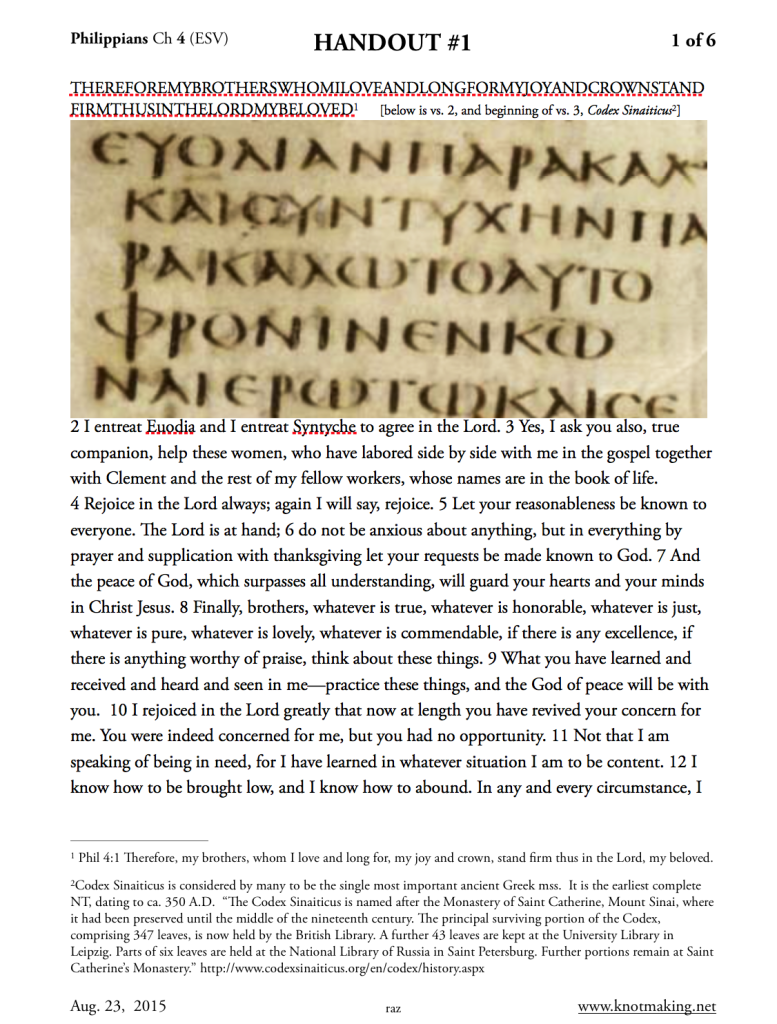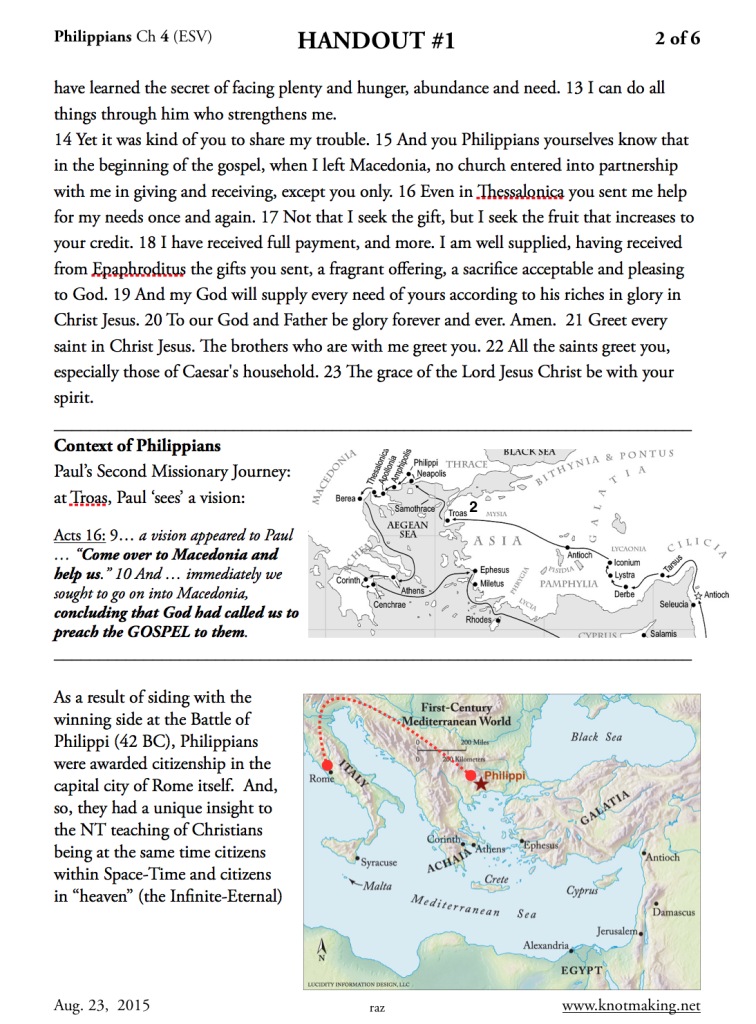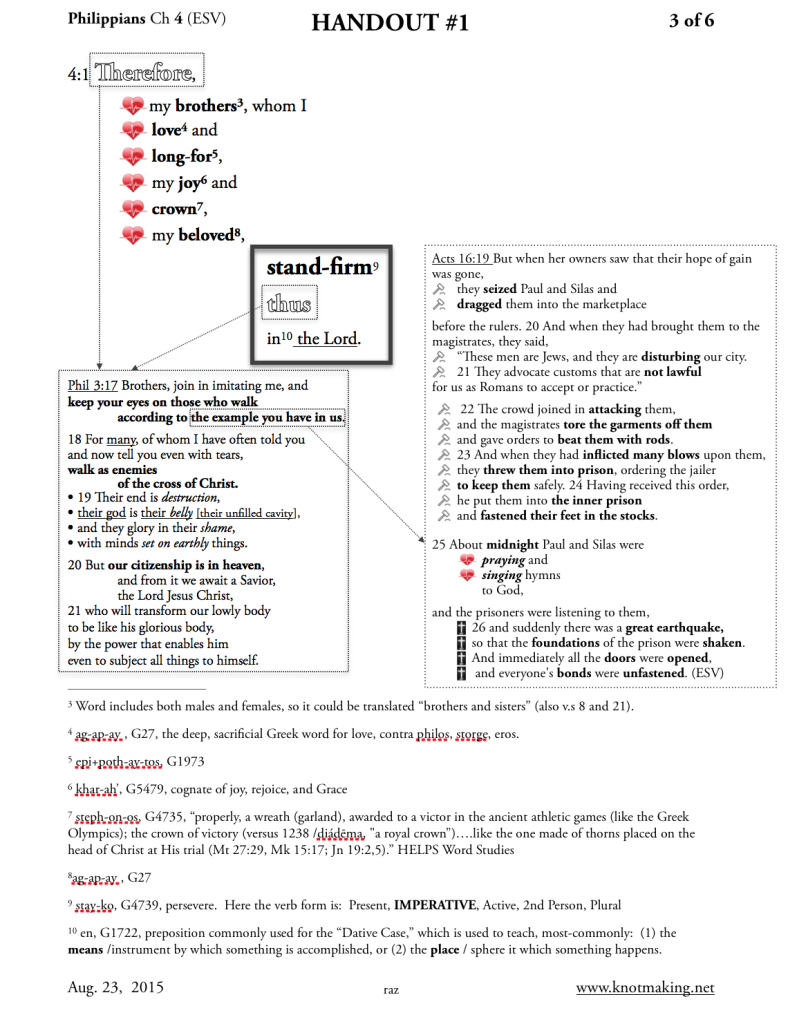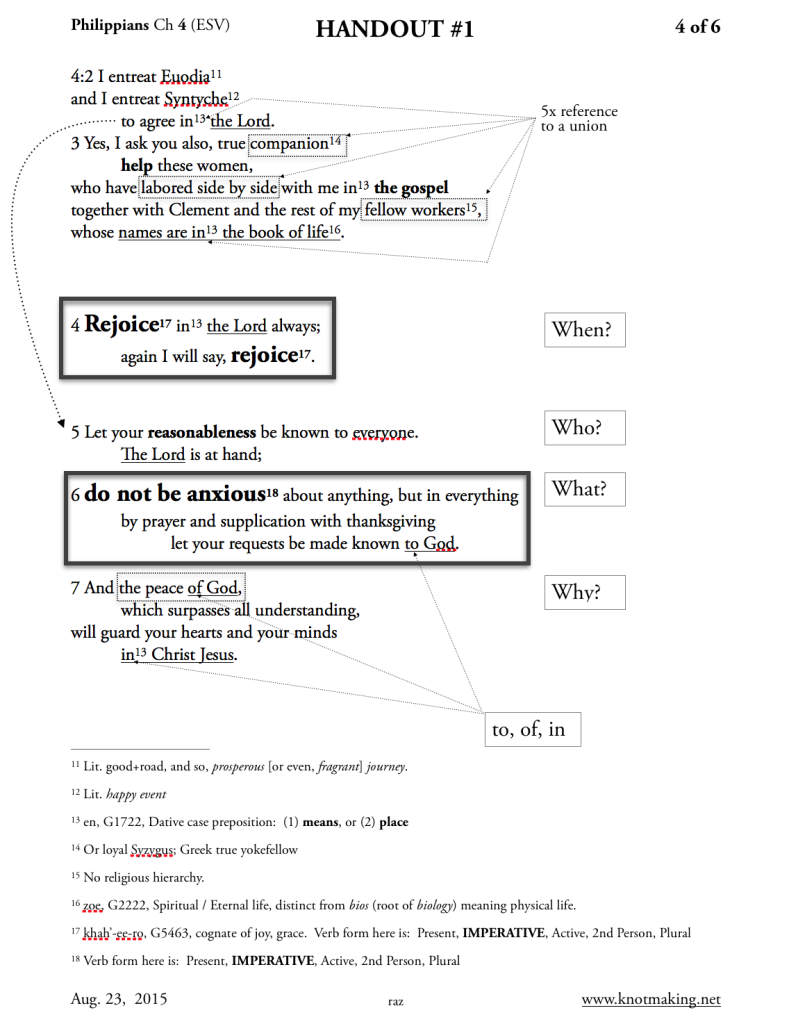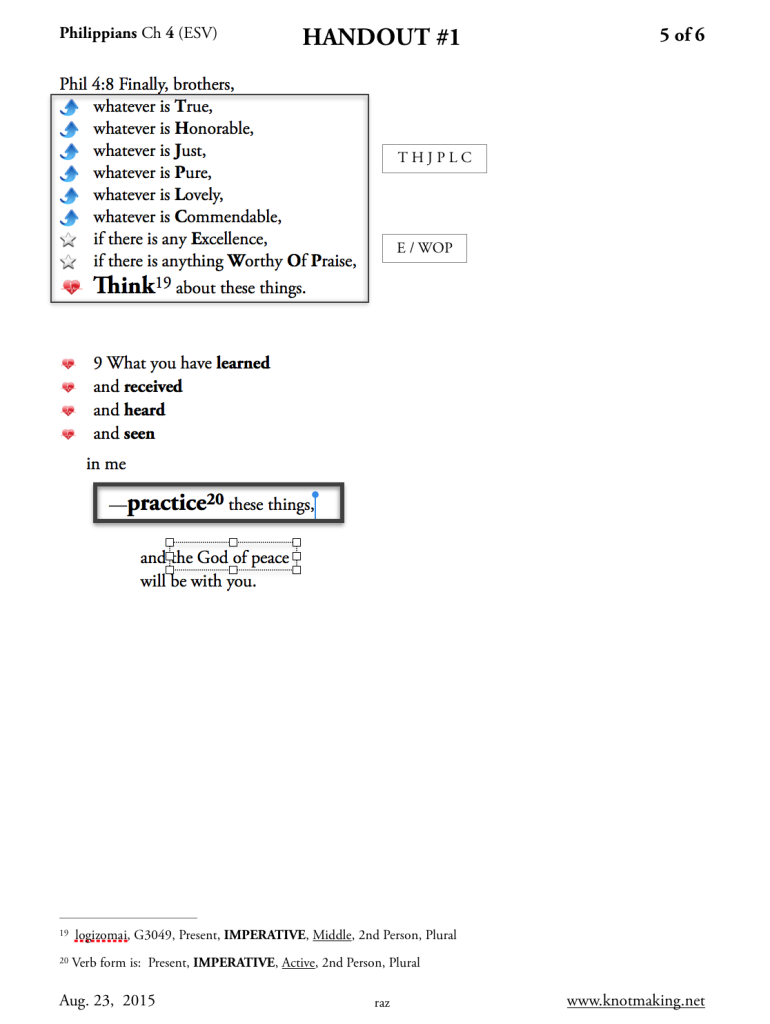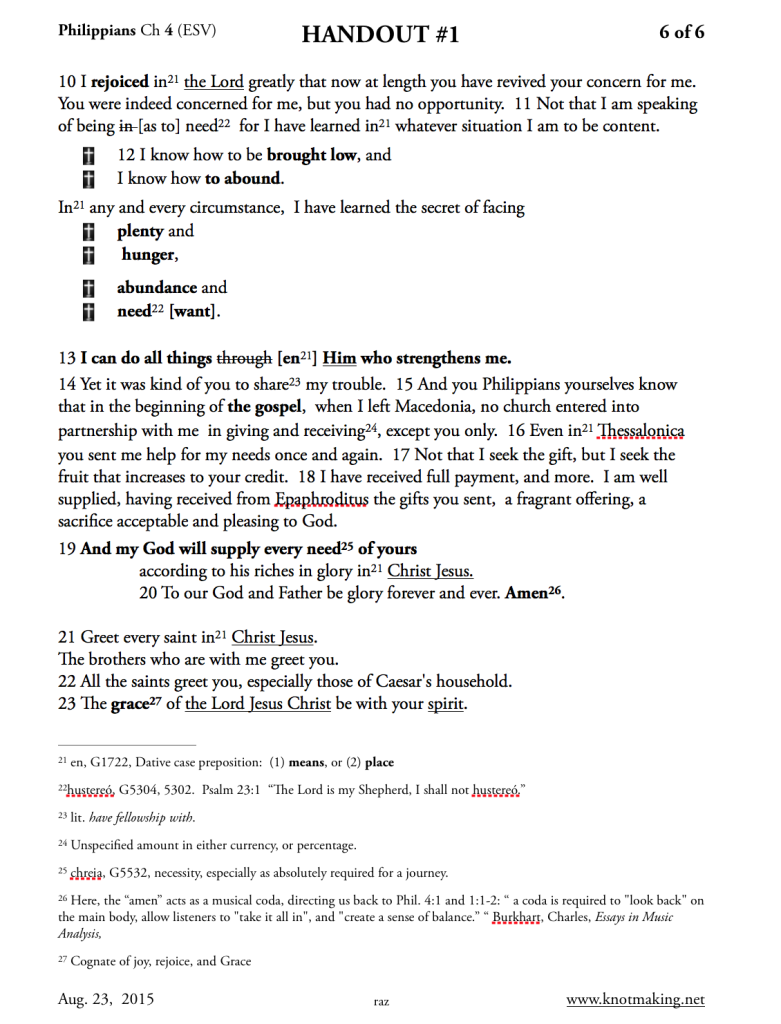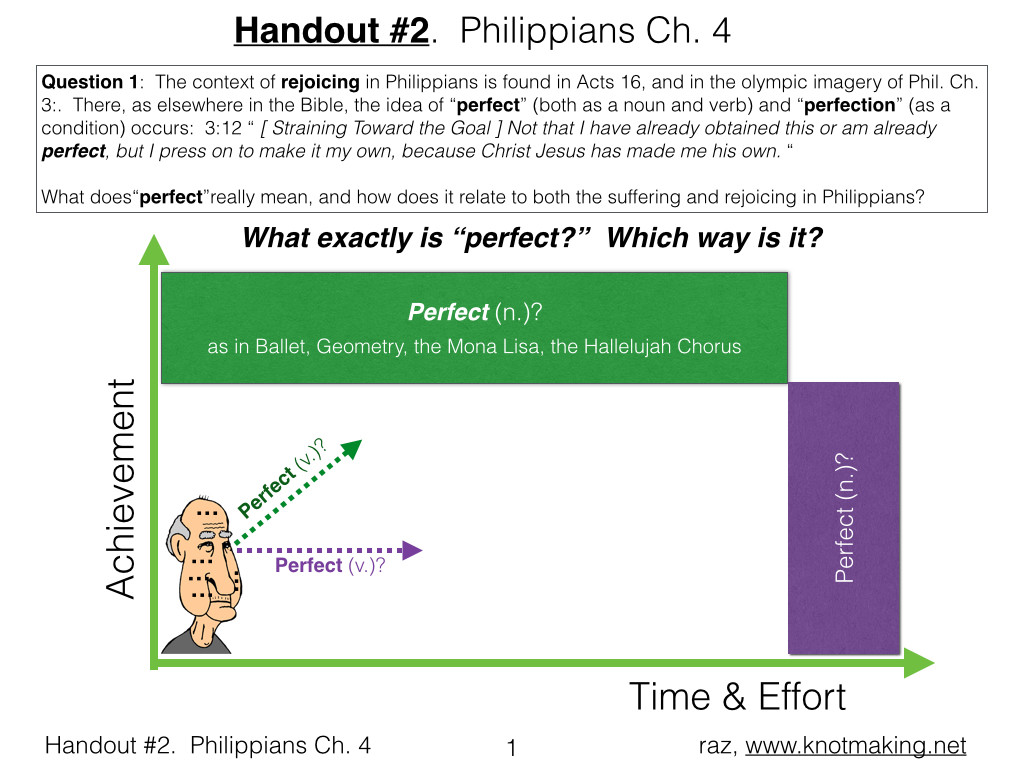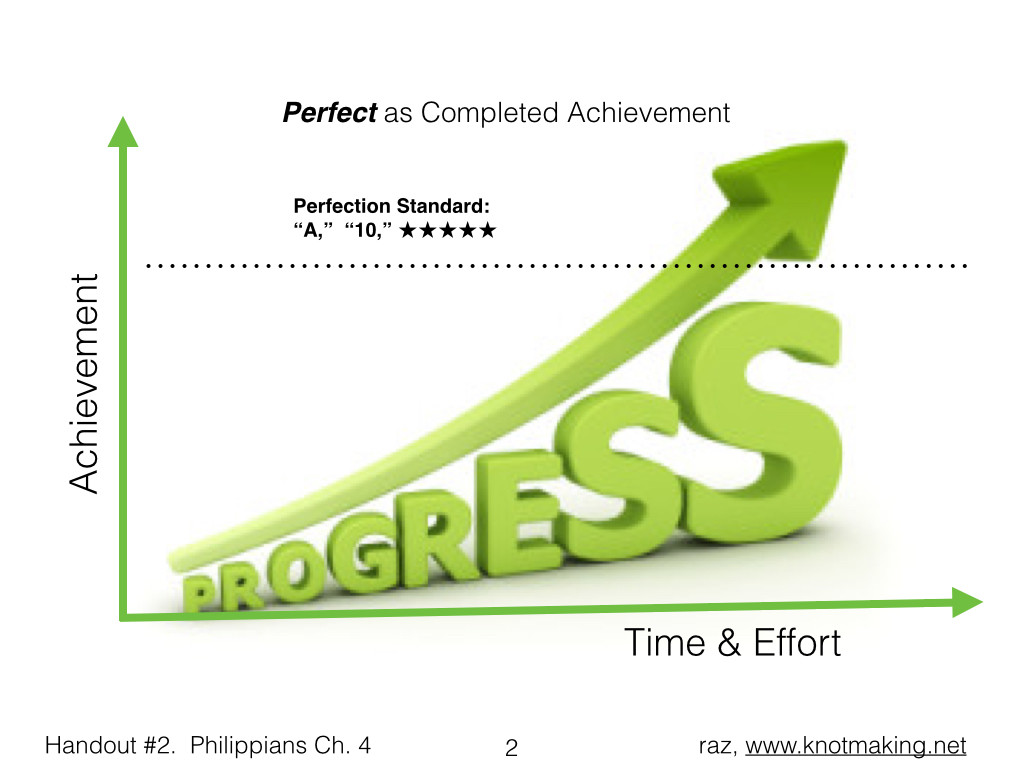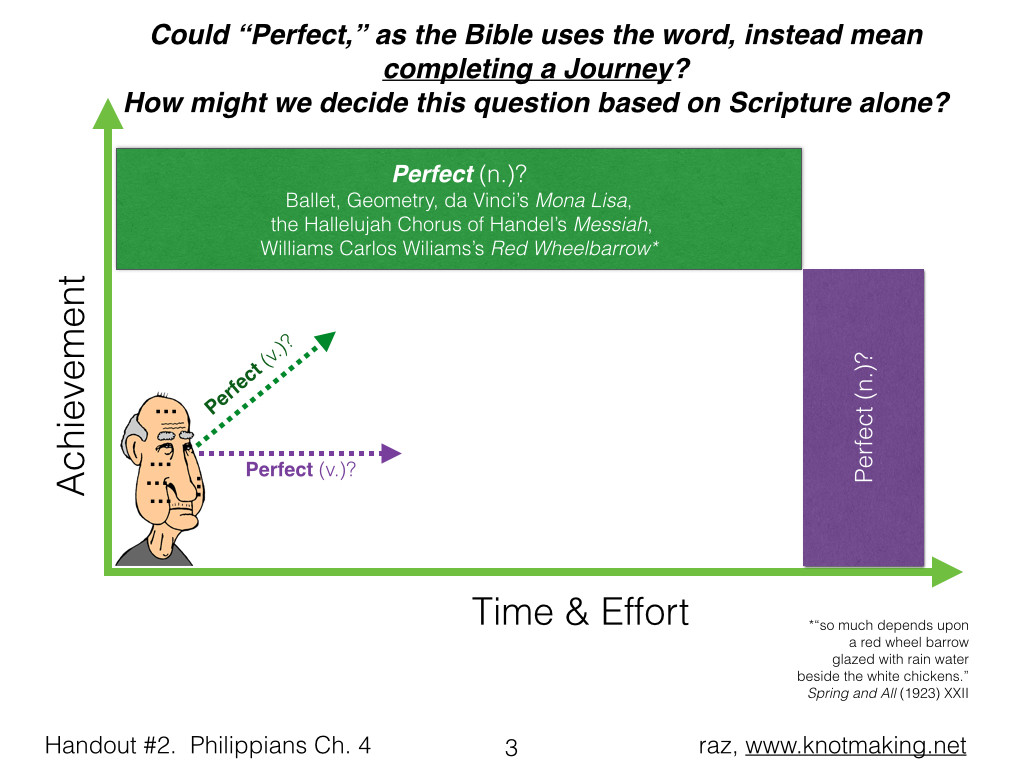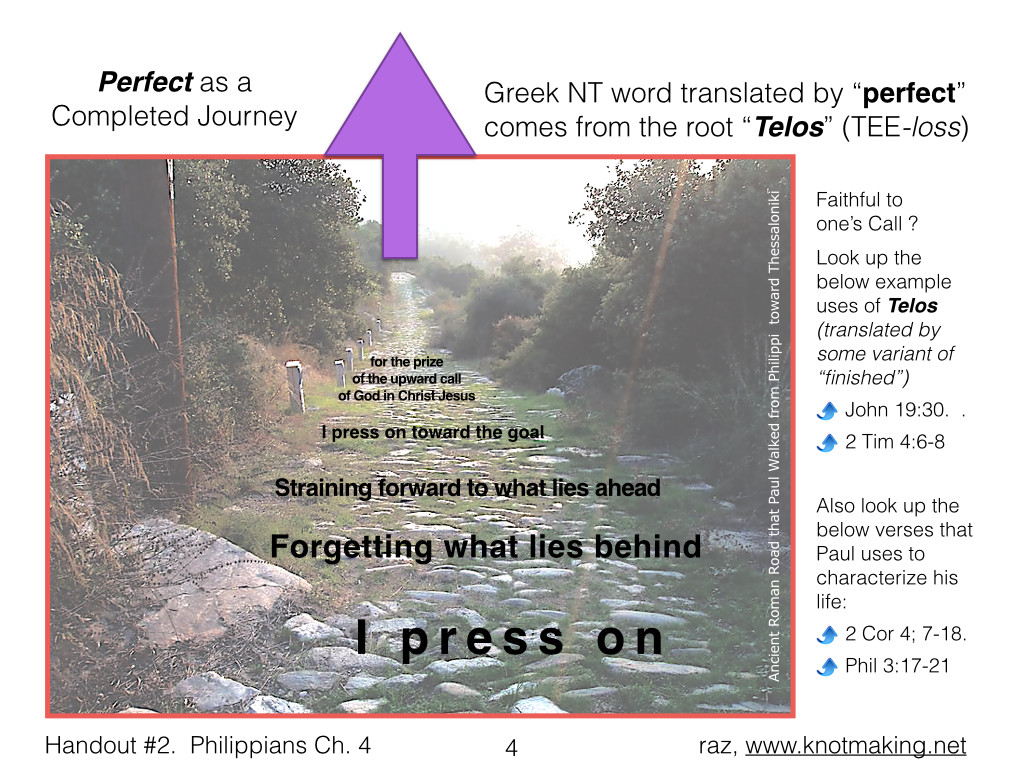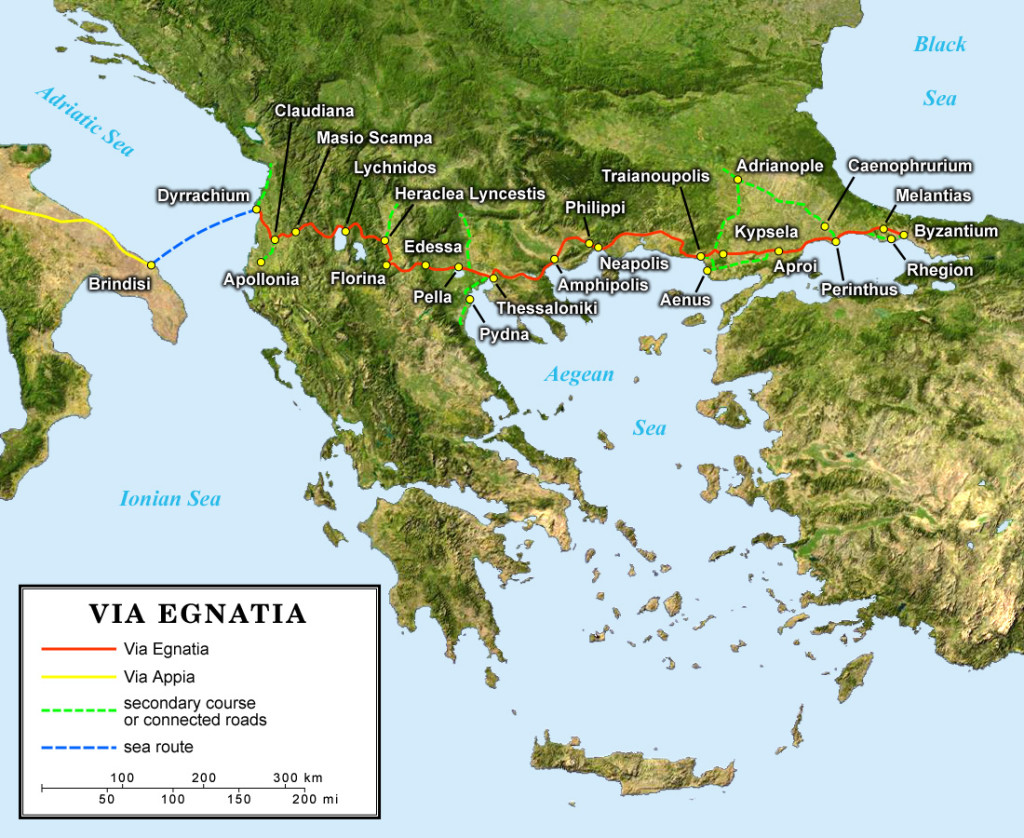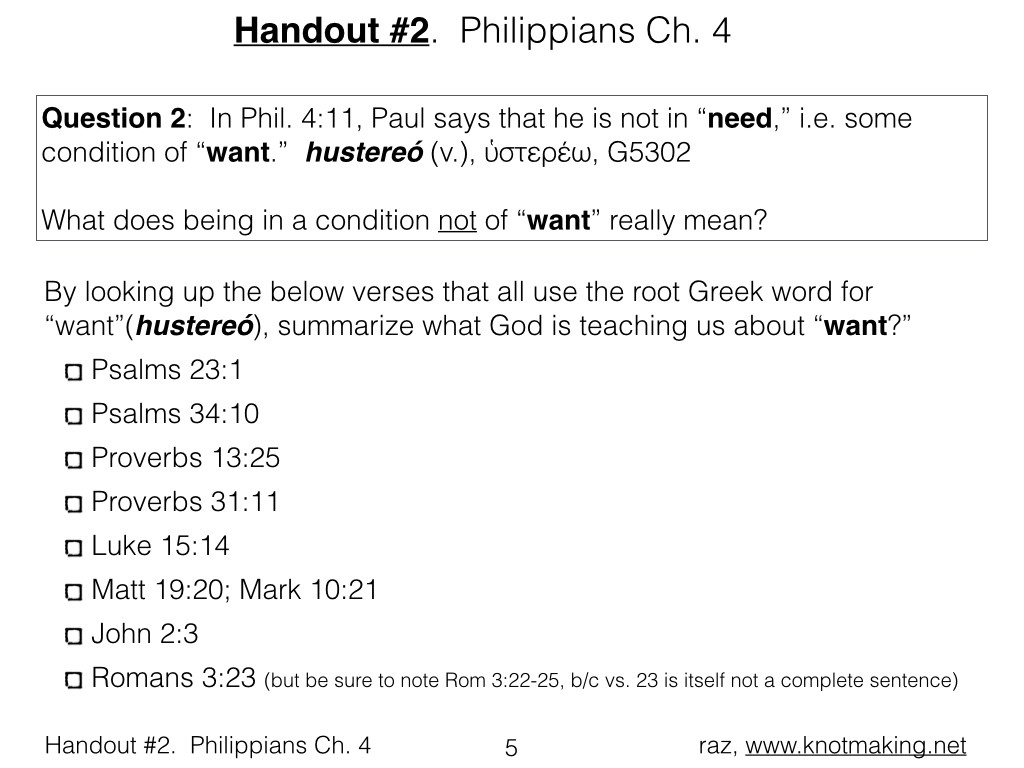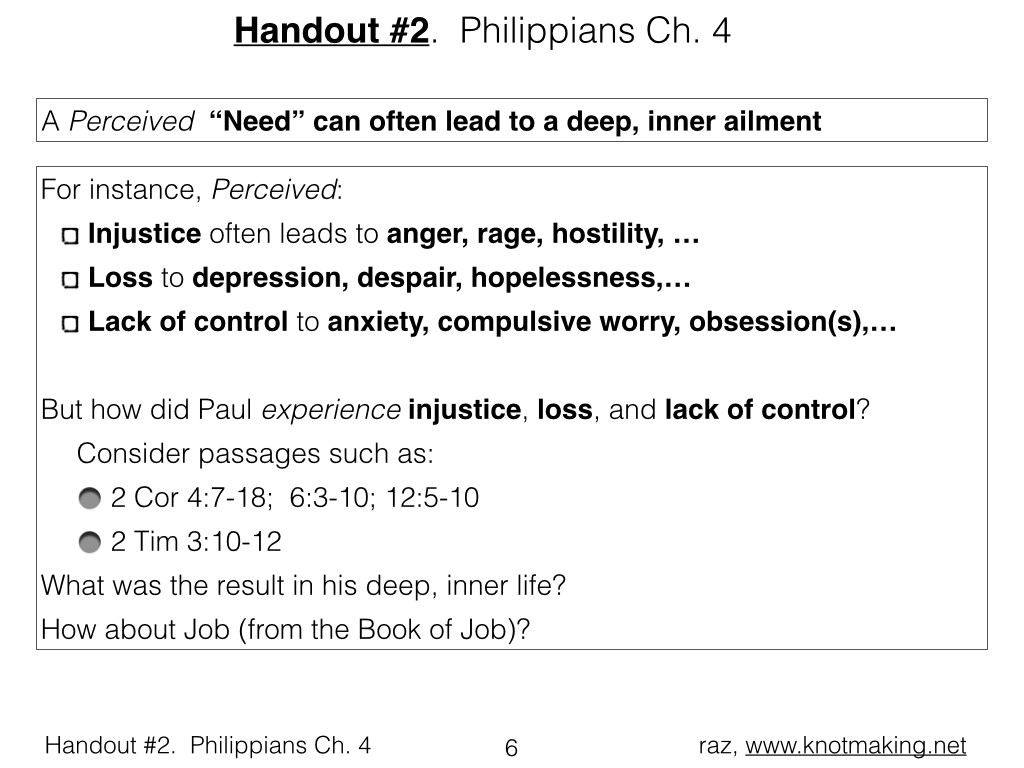Charts below are for our study of Philippians Chapter 4 (Handouts #1), and for discussion questions (Handout #2).
This web site uses a teaching technique based on substantial repositioning and highlighting of the Biblical text. On this page, and on most pages, the Bible translation used is the English Standard Version (ESV). When other translations are used, they are noted.
All the words of the ESV are shown, though in some cases by strike through and brackets I have done some reordering based on my own translation judgment, and also to better illustrate the text.
Is doing all this damaging the text? I sincerely hope not. Here’s some context. The original Biblical texts, such as the portion from the Codex Sinaiticus shown below are all in capital (Greek) letters (i.e., uppercase), without punctuation of any kind, nor spaces after sentences, nor spaces between words, nor chapter numbers nor verse numbers, nor the little headings that we are familiar with in most published Bibles (known as pericopes). What’s going on?
First copyists and later printers have for more than 1,000 years restructured the Biblical text to make it easier to read. This has been done regardless of the particular translation. About 1,000 years after Christ, our familiar chapter numbers were introduced. About 500 years later, verse numbers were added. About that time (ca. 1500 A.D.) embedded commentary was added becoming the first study Bibles. This has been followed by many textual modifications such as two columns, large print, side notes, footnotes, special explanations added in sidebars on various pages and so forth. All such work has been done in the spirit and for the purpose of making the unchanging text easier to read and absorb.
In the first two pages below, I’ve tried to illustrate three examples of portraying the text of Philippians chapter 4. The first sentence below, Phil. 4:1, I’ve written out the ESV translation in all uppercase letters with no spacings between either words or sentences, just as the original manuscript would have done, though of course I’ve done it by electronic printing using English letters.
In the image just below Phil. 4:1, is a screen grab of the famous Codex Sinaiticus which is treasured in the British Museum, and available for public viewing. The passage shown, all in Koiine Greek uppercase letters is Phil. 4:2 and the first two words of Phil. 4:3, with the ESV translation just below the image. For those who can read Greek, the very first word is the seven letters which can be transliterated “Euodian” (translated Euodia), The following letters on the first line spell out (transliterated) “parakaloo” (translated entreat).
Finally, the text below the pasted image is the rest of Phil. 4 in ordinary block text, but including the traditional verse numbers. Beginning on page 3, I’ve taken this same ESV text of Phil. 4 and restructured it, diagrammed it, and taken it apart, but retaining every single word, all for the purpose of making it easier to drill down into its meaning, drinking as deeply from this great well as we may be enabled to do.
Discussion Handout is below:
Below is the original full-color photograph of the renown Roman road shown in Chart 4 above. This road connects the city of Philippi with Thessaloniki. Paul and Silas, and perhaps Luke as well, almost certainly walked this very road at the close of the events recorded in Acts 16. Their walk would have been in great physical pain from their beating and imprisonment in Philippi, but with great joy for the privilege of having been used by God to introduce certain Greek Macedonians to Jesus Christ, and to faith.’
This section of the road was a small part of the famous Egnatian Road. Below is an overview of the road taken from Wikipedia:
Via Egnatia
From Wikipedia, the free encyclopedia
This article is about an ancient road. For the modern road by the same name, see Egnatia Odos (modern road).Route of the Via Egnatia.
Ancient Via Egnatia near Kavala (Neapolis)
Remains of Via Egnatia near Radozda
The Via Egnatia (Greek: Ἐγνατία Ὁδός) was a road constructed by the Romans in the 2nd century BC. It crossed the Roman provinces of Illyricum, Macedonia, and Thrace, running through territory that is now part of modern Albania, the Republic of Macedonia, Greece, and European Turkey.Starting at Dyrrachium (now Durrës) on the Adriatic Sea, the road followed a difficult route along the river Genusus (Shkumbin), over the Candaviae (Jablanica) mountains and thence to the highlands around Lake Ohrid. It then turned south, following several high mountain passes to reach the northern coastline of the Aegean Sea at Thessalonica. From there it ran through Thrace to the city of Byzantium (later Constantinople, now Istanbul). It covered a total distance of about 1,120 km (696 miles / 746 Roman miles). Like other major Roman roads, it was about six metres (19.6 ft) wide, paved with large polygonal stone slabs or covered with a hard layer of sand.
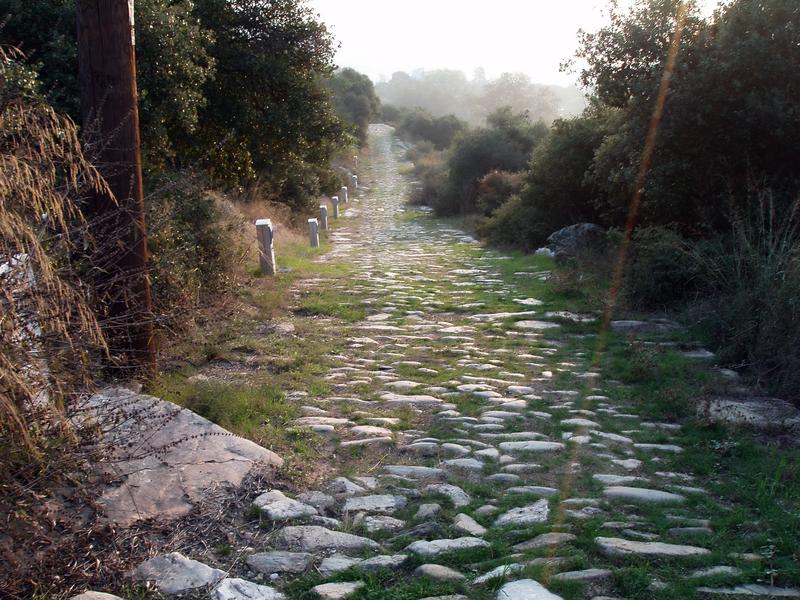
The above picture is taken from: http://www.greecetravelphotos.com/thessaloniki.html
The Via Egnatia is shown below (taken from Wikipedia). Philippi is just about dead center, shown as a yellow (city) dot on the red line representing the Via Egnatia.
Elisabeth Elliot, who passed in June 2015, had a very long and incredibly rich life serving God. And it was a long road with much adversity, having lost two husbands to death, and many challenges of serving on the mission field. She was an extremely gifted speaker, a gift which God used, and now the internet has preserved, to teach many. Her home page is:
- www.elisabethelliot.org
- Many of her lectures are freely available at:
https://www.blueletterbible.org/audio_video/elliot_elisabeth/misc/Elisabeth_Elliot_Speaks_About.cfm
